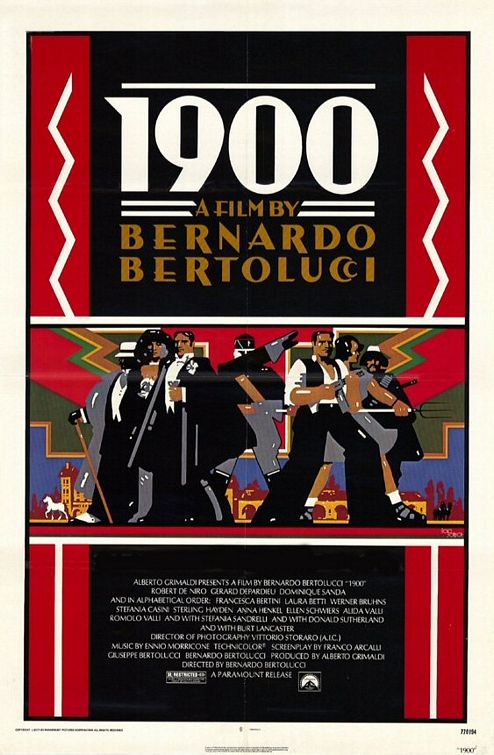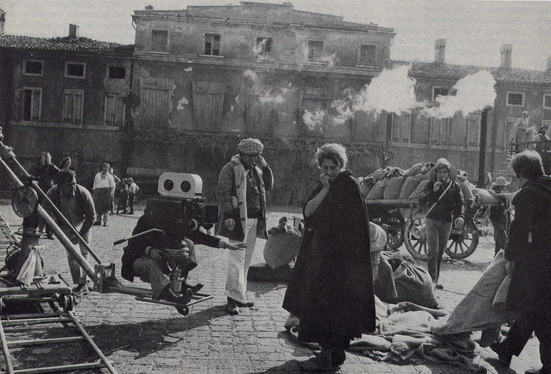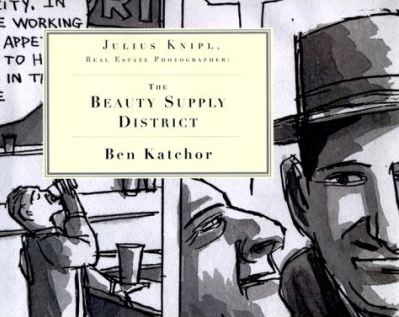A quote from Urn-Burial, a strange book by the 17th-Century author Thomas Browne:
“What Song the Syrens sang, or what name Achilles assumed when he hid himself among women, though puzzling Questions are not beyond all conjecture . . .”
The painting above is by Herbert Draper, a good example of Victorian soft-core pornography. They were better at it than we are.
The example below is by John William Waterhouse. The Victorians knew that marrying restraint and indirection to perversity produced a more delirious kind of eroticism.
Monthly Archives: January 2007
1900

It’s hard to imagine that there will ever be another movie like 1900. The sheer size of its physical production (as opposed to the CGI resources it deploys) and the care and imagination
lavished on almost every scene, every set-up, every shot, seem beyond the resources and the ambitions of modern filmmakers.
When it came out, in 1977, Pauline Kael said it made every other movie released that year look like “something on the end of a toothpick”. It makes most movies ever released look that small.
Which is not to say that it’s a grandly satisfying film, that it doesn’t fail on many levels — but it really is a hell of thing to look at and experience.
Bertolucci’s initial cut of the film clocked in at something over five hours — and that’s the only length at which the film makes sense. There’s no urgent narrative at the heart of it that
emerges when it’s pared down — abridgment just violates the leisurely pace of the film, which asks us to immerse ourselves in images, in recreated eras, in the slow meandering of history.
If you can surrender to its pace, relish its imagery without hurry or anticipation, you are treated to an orgy of cinematic beauty — a pure and joyous celebration of the possibilities of the medium.
You can forget, or set aside, what’s wrong with the film — its programmatic characters, who sometimes come to dramatic life but just as often stayed fixed in their roles as
political archetypes, its naive celebration of the romance of Communism, its cartoonish reduction of history into icons and slogans.
What you will remember are places, times of day, the play of light, the choreography of peasant dances and cavalry charges and duck hunting from small boats.
Afterwards you’ll find yourself wishing the film had been better — but while you’re inside its rapturous, disjointed visions, it’s hard to imagine anyplace you’d rather be.
[A DVD with Bertolucci’s original cut, in an excellent transfer on two discs, has just been released, and it’s well worth owning — it may be the only five-hour-plus film you’ll want to look at again and again.]

The picture above — showing Bertolucci, in the checked cap, setting up a shot on 1900 — is from a web log that regularly posts great images from film and popular culture. Check it out here:
If Charlie Parker Was a Gunslinger, There’d Be a Whole Lot of Dead Copycats
BEN KATCHOR, REAL ESTATE PHOTOGRAPHER

This past November I was delighted to read a notice in the newspaper
that Ben Katchor was going to be appearing in Las Vegas as part of the
Las Vegas Valley Book Festival. Katchor is one of the great fiction
writers at work today, and he happens to work in the medium of the
comic strip, or picture stories as he likes to call what he makes.
His
signature creation is Julius Knipl, real estate photographer, who
wanders the back streets of a disappearing New York, the New York of
the small-time merchants and manufacturers and wholesalers who used to
be the life's blood of the city's economy but are now being moved out
to the fringes of things by the inexorable yuppification of the city,
or at least of Manhattan.
The
disappearance of the small-time manufacturers in Manhattan made
possible my own residency in the city, starting in 1972, when artists
and various other undesirables started renting (illegally) the lofts
vacated by the small enterprises that were becoming economically
unfeasible. Back then, we lived among the remnants and the ghosts of
these vanishing concerns, businesses that made flags and coat hangars,
fur coats and uniforms.
We
were, alas, only the pilot fish for a new influx of urban professionals
who turned the loft districts into fashionable residential areas —
eventually the yuppies would drive us out of the city as they
transformed our Bohemia into the capital of Connecticut. Fair enough.
But Katchor remembers the city we Bohemians displaced, just as someday
someone will remember the city we remade. No one will care to remember
the new city of the yuppies.
The New York I miss most these days is the New York Katchor memorializes — but I missed it even when I was living in
New York. It exists now only in dreams and in art.
Katchor
spoke in a gallery at the Holsum Lofts, a converted bread factory
that is part of a valiant and almost certainly doomed effort to create a new Bohemia in Las Vegas.
It's located downtown, on Charleston Boulevard, near the few places in
the area which still retain the flavor of the dirty old city — places
like Johnny Tocco's, a classic and legendary boxing gym unchanged for
decades.
Katchor
read some of his strips, with the panels projected onto a screen. It
was interesting to see how well they played with the small audience,
which was often, like myself, laughing out loud. Katchor's tone in his
strips is generally wistful and melancholy, but there's a dark humor to
them that makes his visions bearable, and a quiet anger that gives them
great energy. All this could be heard in his voice.
Katchor
was kind enough to sign one of my Knipl books with an illustration of
Mr. Knipl, and to add the date and place of the inscription. Julius
Knipl in Las Vegas — now there's a surreal image. The yuppification of
Las Vegas proceeds apace, and it will soon have the smug bourgeois
vapidity of modern-day New York, but the process will leave
deep secrets buried here, secrets that would certainly reveal
themselves to a dogged,
mystical real estate photographer.
Here's a link to Katchor's site, where you can buy books and cards and prints, and see what he's up to:
Ben Katchor's Web Site
[Click on the image above for a bigger version]
